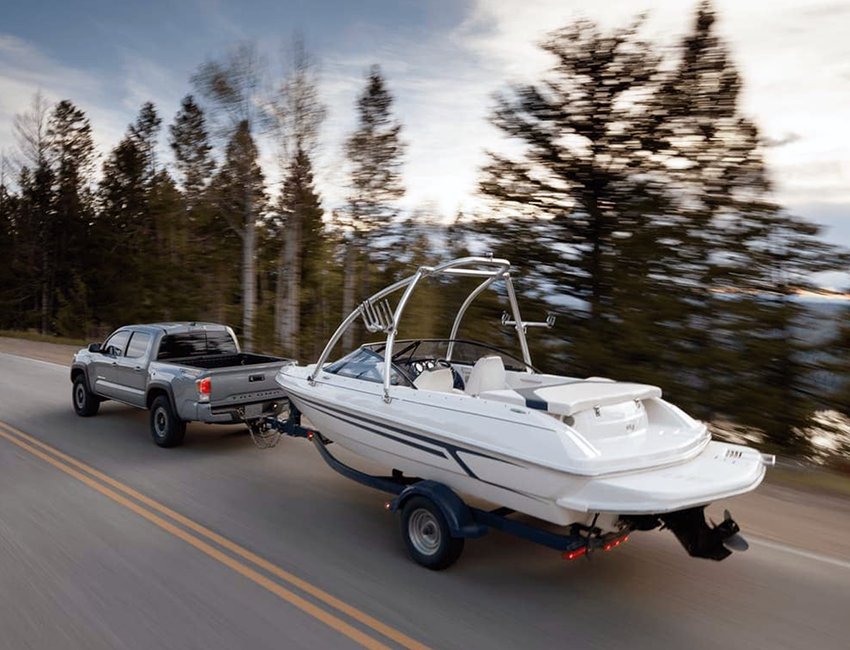The most important things to know = check and double check when towing a boat behind your vehicle.
But…first things first. If you’re starting from scratch, you need to know you have the best car, van, truck or SUV to haul your boat down the road to avoid an auto accident. In a nutshell, you need to consider the weight of your rig, the type of terrain you'll be navigating, and just how important your own personal comfort is.
When a vehicle will be used for towing, accessories are necessary. Commonly called a “tow package,” this includes items like extended towing mirrors, transmission coolers, and, of course, the tow hitch itself.
What You Should Know Before You Head to the Water by Way of the Highway
Start with attaching the trailer to the towing vehicle:
- Align the hitch and ball, then lower the trailer hitch down over the ball.
- Close the latch and insert the safety pin.
- Never drive off without the safety pin in place! If you hit a bump while towing, the hitch might pop off the ball and you can imagine the rest from there.
- Make sure to crisscross your chains under the frame and attach them to the truck.
- The chains must be able to support the weight of the entire load. This is critical for safety if the hitch should break. They should always be crossed so if the hitch does fail, the chains will support the trailer tongue.
- Check to make sure that the trailer brake lights and directional lights are all working.
- That way other drivers will know when you're stopping, braking or turning. If your trailer has brakes, attach the safety line to the tow vehicle. (This will engage the brakes if, for some reason, the trailer comes free from the vehicle). After you’ve plugged in the lights, run a full check to make sure they're all working.
- Check the tire pressure and ensure the lug nuts are tight and secure.
- Adjust your side view mirrors so that you can get a clear view of the trailer and any traffic behind you.
- Make sure that your boat is centered on the trailer and that any fuel and gear are distributed evenly.
- Just like on the water, an uneven boat load can cause instability. It also makes steering and maneuvering much more difficult.
- Tie down all loose items and equipment in and on your boat before ever leaving the driveway.
- Use some additional straps to tie down the boat to the trailer frame.
Once you’re ready to back your trailer in the water:
- Walk back to the trailer hubs and check that they're cool to the touch.
- If they’re hot, your bearings aren’t functioning properly and need to be serviced immediately.
- Don’t remove the winch strap and safety chain until you’ve backed the boat down into the water.
- If you remove the strap and chain too soon, the boat can slide off the trailer.
Lastly, it’s paramount you practice, practice, practice. Before you tackle any busy roads or long trips, take your rig to an open parking lot. Practice backing, turning, and making other maneuvers in a controlled setting. It takes time to get used to these maneuvers, so it's important to practice gaining expertise and confidence.
If you happen to be headed on a longer trip with your boat in tow, take a moment halfway along your trip to double check your road safety checklist. Enjoy the water folks and remember - no nautical nonsense out there!



